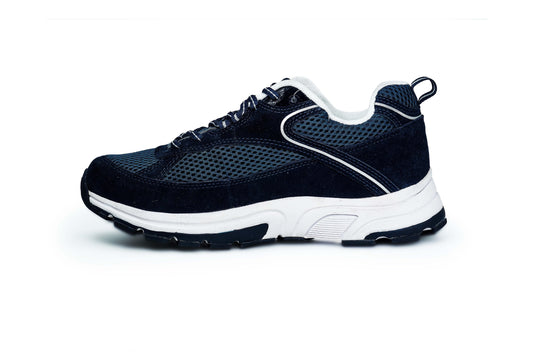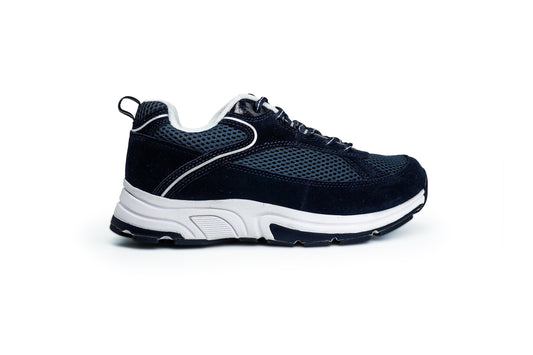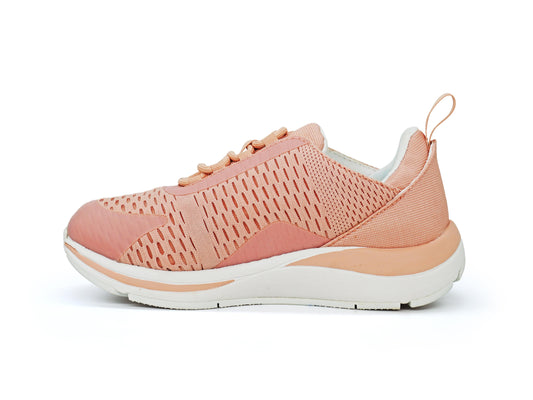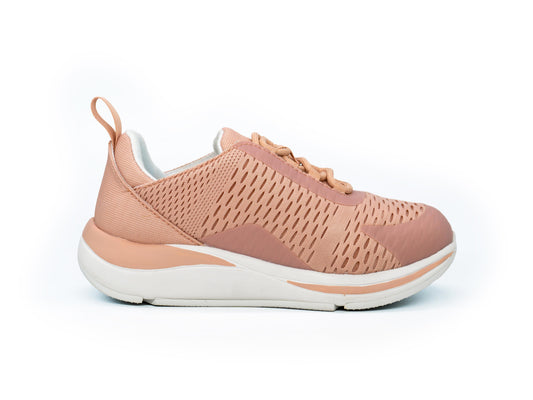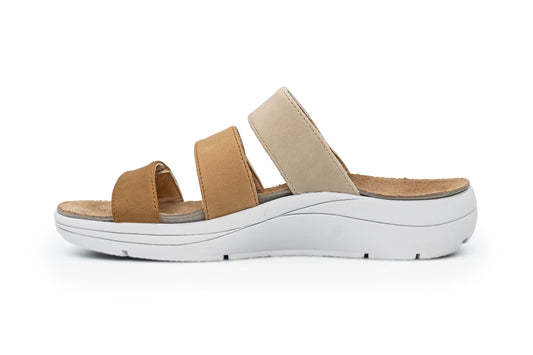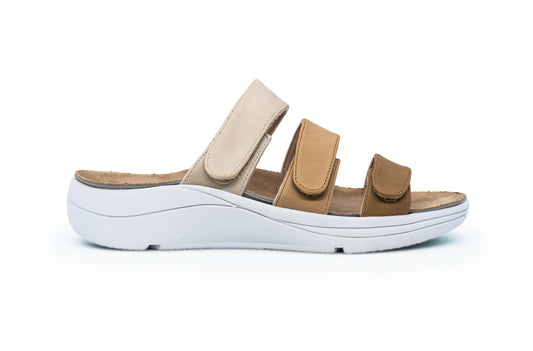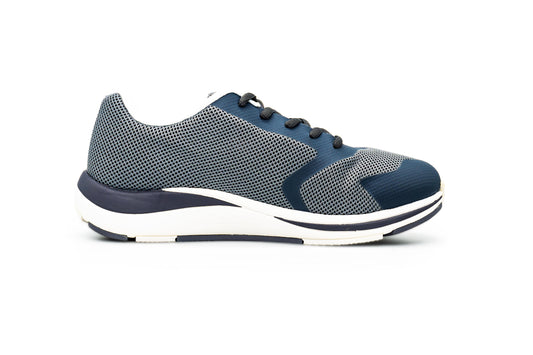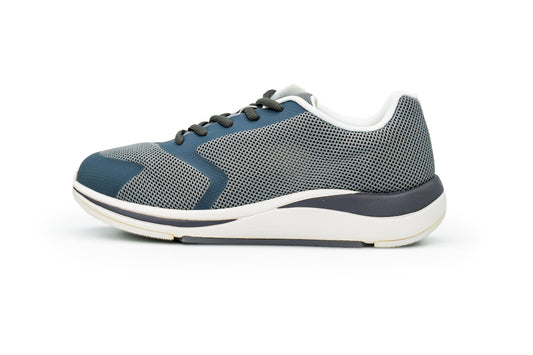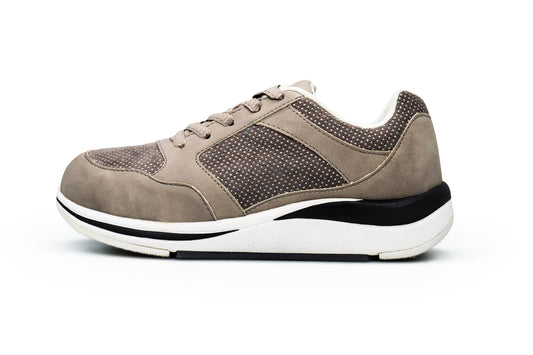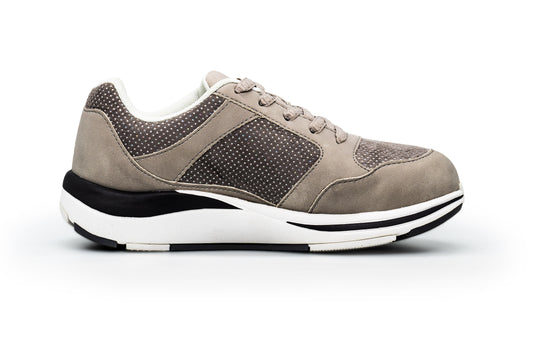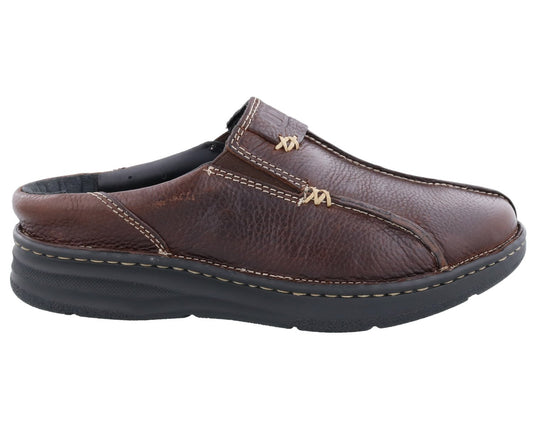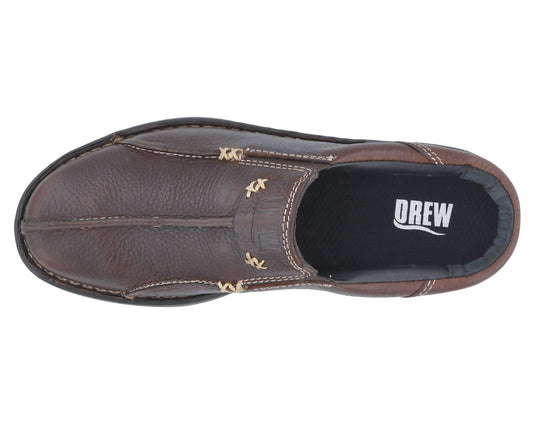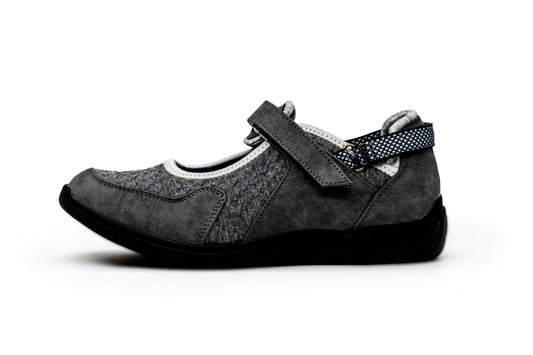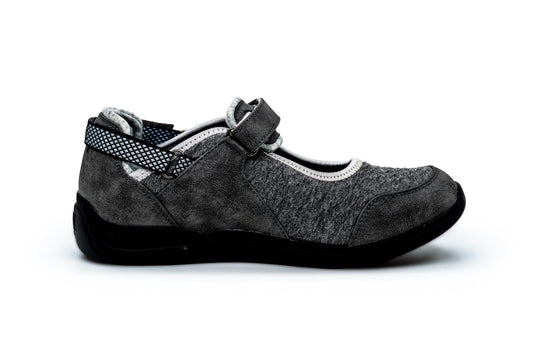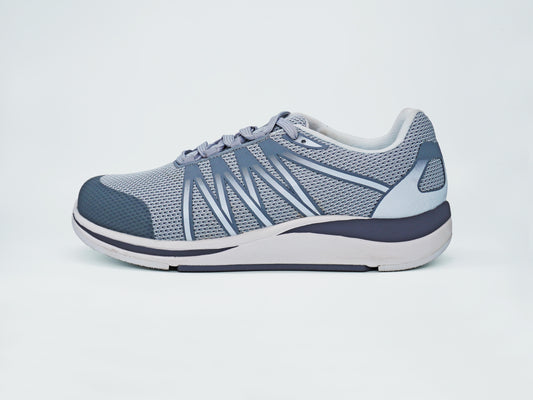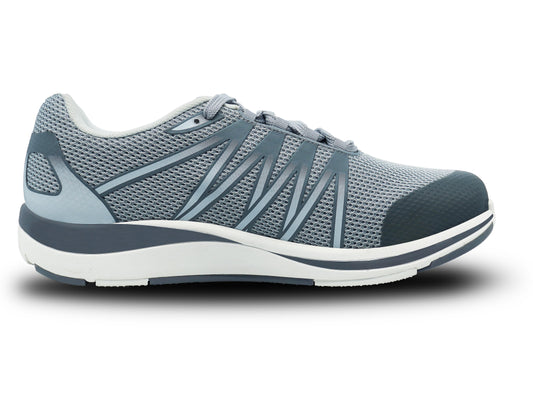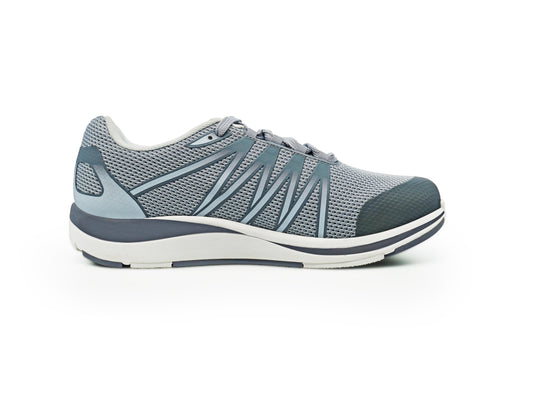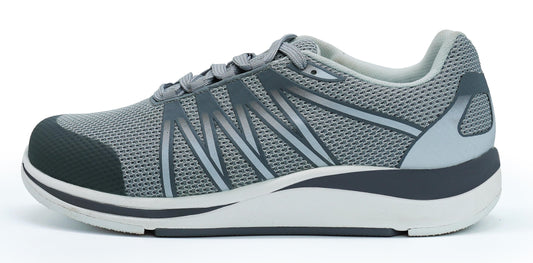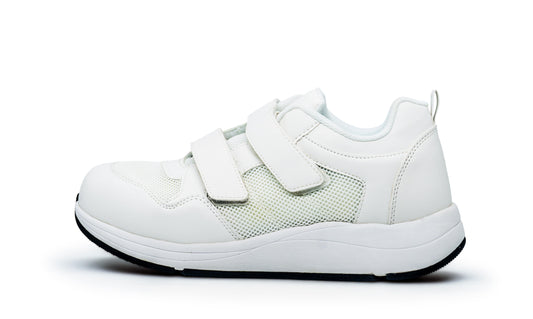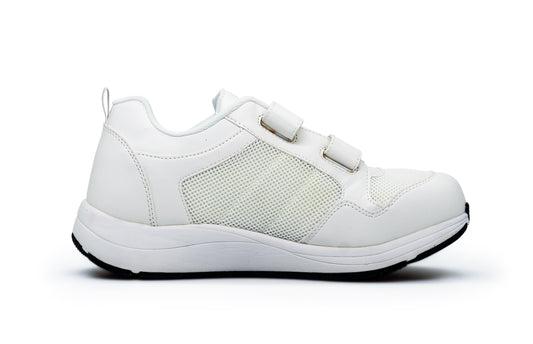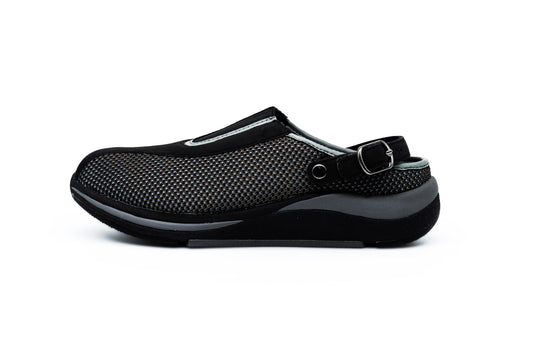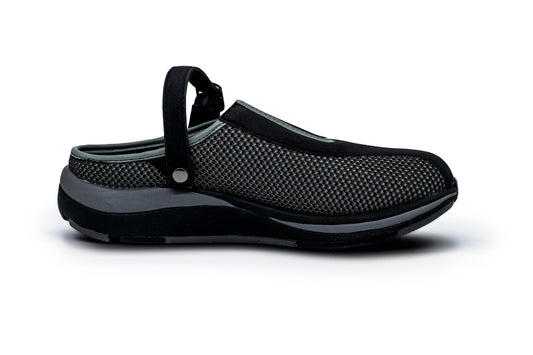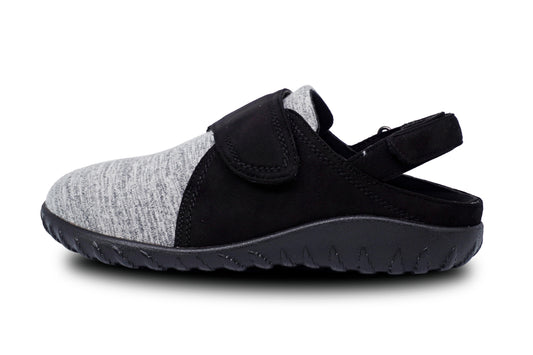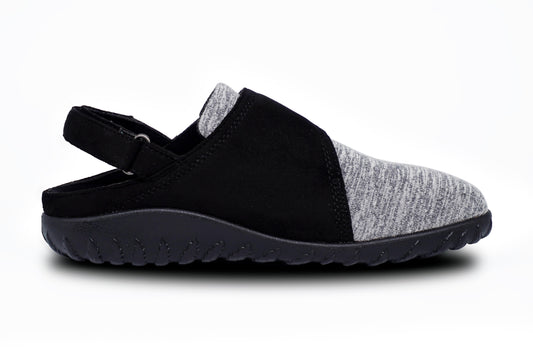-
Vendor: MENS
AARON Diabetic & Orthopedic Athletic Shoes - Mens - Navy Suede/Mesh
Walk in confidence knowing Drew Aaron only available exclusive at DiabeticShoe.in offers the proprietary Plus Fitting System® with two removable insoles plus all the therapeutic benefits Drew is famous for. With shock-absorbing inserts, flared outsoles, firm heel counters and Drilex® linings to wick away...- ₹ 11,695
₹ 12,995- ₹ 11,695
- Unit price
- / per
-
Navy Suede/Mesh
-
Vendor: WOMENS
SPRINTER Diabetic & Orthopedic Athletic Shoe Rose - Womens - Rose Combo
The Sprinter women's lace-up sneaker by Drew only available exclusively at Diabeticshoe.in features our Walk Right Technology Insole and is engineered for protection and superior comfort. A slip-resistant outsole will keep you on your feet. The high rebound EVA midsole provides shock absorption to...- ₹ 11,695
₹ 12,995- ₹ 11,695
- Unit price
- / per
-
Rose Combo
-
Grey Mesh Combo
-
Vendor: WOMENS
SAWYER Diabetic & Orthopedic Sandal - Womens - Blue Combo
Sawyer womens sandals by Drew® at DiabeticShoe.in combine an updated modern look with a hard-to-find removable insole. The removable Walk Right Technology™ footbed makes Sawyer one of the most comfortable women's sandals around! Featuring a lightweight outsole and three hook and loop adjustable straps,...- ₹ 8,995
₹ 10,995- ₹ 8,995
- Unit price
- / per
-
Blue Combo
-
Natural Combo
-
Vendor: MENS
STABLE Diabetic & Orthopedic Walking Shoes - Mens - Grey Mesh
The name says it all. The Stable features our proprietary Drew with Walk Right Technology™ in a men's athletic sneaker/walking shoe with superior support and comfort. A slip-resistant outsole will keep you connected with the ground. The high rebound EVA midsole provides shock absorption...- ₹ 10,795
₹ 11,995- ₹ 10,795
- Unit price
- / per
-
Grey Mesh
-
Vendor: WOMENS
CHIPPY Diabetic & Orthopedic Athletic Shoes - Womens - Grey Combo
Drew Chippy exclusively available at Diabetic Shoe India is our most popular casual shoes for women offers a great, new look for Drew. Chippy shoes are one of the industry's few walking shoes with double depth and two removable insoles that can accommodate prescribed...- ₹ 10,795
₹ 11,995- ₹ 10,795
- Unit price
- / per
-
Grey Combo
-
Vendor: MENS
JACKSON Diabetic & Orthopedic Sandal - Mens - Brown Pebbled Leather
One step into this clog, and you'll feel like you're walking on clouds. Great-looking tumbled leathers make Drew® Jackson the most requested clog in the industry. available exclusive at DiabeticShoe.in These Drew men's shoes define quality, comfort, support and stability. Drew Jackson are fully...- ₹ 11,695
₹ 12,995- ₹ 11,695
- Unit price
- / per
-
Brown Pebbled Leather
-
Vendor: WOMENS
BUTTERCUP Diabetic & Orthopedic Sandal - Womens - Grey Combo
The Drew® Buttercup available in India exclusively at DiabeticShoe.in is our best orthopedic shoe yet ! This popular women's shoe offers beautiful, detailed styling with the convenience and comfort of an adjustable hook and loop closure at the top of the foot with a detachable strap...- ₹ 11,695
₹ 12,995- ₹ 11,695
- Unit price
- / per
-
Grey Combo
-
Vendor: MENS
PLAYER Diabetic & Orthopedic Athletic Shoes - Mens - Grey Mesh
The men's Player offers Drew with Walk Right Technology™ and is engineered for protection and superior comfort and support only avaiable to buy at Diabetic Shoe India. A slip-resistant outsole will keep you on your feet. The high rebound EVA midsole provides shock absorption...- ₹ 10,795
₹ 11,995- ₹ 10,795
- Unit price
- / per
-
Grey Mesh
-
Vendor: WOMENS
BALANCE Running Shoes - Womens - Grey Mesh
The Balance women's athletic shoe features our Walk Right Technology™ Insole and is engineered for protection and superior comfort. A slip-resistant outsole will keep you on your feet. The high rebound EVA midsole provides shock absorption to reduce foot and leg fatigue. Complete with...- ₹ 10,795
₹ 11,994- ₹ 10,795
- Unit price
- / per
-
Grey Mesh
-
Vendor: MENS
CONTEST Diabetic & Orthopedic Sneaker- Mens - White Combo
The Contest by Drew men's double hook and loop sneaker is engineered for superior comfort exclusively available to buy from Diabetic Shoe India. A slip-resistant outsole will keep you sure on your feet. The high rebound EVA midsole provides shock absorption to reduce foot...- ₹ 10,795
₹ 11,995- ₹ 10,795
- Unit price
- / per
-
White Combo
-
Vendor: WOMENS
PURSUIT Slip-On Sneaker - Womens - Black Mesh Combo
Drew's Pursuit slip-on sneaker exclusively available at Diabetic & Orthopedic Shoe India for women is a multi-functional shoe designed with the utmost comfort in mind. Pursuit can be slipped on with ease and can be worn with or without the ankle strap. It's extremely...- ₹ 9,895
₹ 11,995- ₹ 9,895
- Unit price
- / per
-
Black Mesh Combo
-
Vendor: WOMENS
BREEZY Slipper Footwear - Womens - Black Microsuede/Stretch
Exclusive textures and comfortable design is a smash success in the womens Breezy slip-on by Barefoot Freedom® by Drew® only available exclusive at DiabeticShoe.in. Adjustable hook and loop closure at the heel and vamp allow for a customized fit. Stretch fabric along with a supportive,...- ₹ 9,995
₹ 10,995- ₹ 9,995
- Unit price
- / per
-
Black Microsuede/Stretch
Trending Now
Popular Products
Vendor:
MENS
AARON Diabetic & Orthopedic Athletic Shoes - Mens - Navy Suede/Mesh
Walk in confidence knowing Drew Aaron only available exclusive at DiabeticShoe.in offers the proprietary Plus Fitting System® with two removable insoles plus all the therapeutic benefits Drew is famous for. With shock-absorbing inserts, flared outsoles, firm heel counters and Drilex® linings to wick away...
- ₹ 11,695
₹ 12,995- ₹ 11,695
- Unit price
- / per
-
Navy Suede/Mesh
Vendor:
WOMENS
SPRINTER Diabetic & Orthopedic Athletic Shoe Rose - Womens - Rose Combo
The Sprinter women's lace-up sneaker by Drew only available exclusively at Diabeticshoe.in features our Walk Right Technology Insole and is engineered for protection and superior comfort. A slip-resistant outsole will keep you on your feet. The high rebound EVA midsole provides shock absorption to...
- ₹ 11,695
₹ 12,995- ₹ 11,695
- Unit price
- / per
-
Rose Combo
-
Grey Mesh Combo
Vendor:
WOMENS
SAWYER Diabetic & Orthopedic Sandal - Womens - Blue Combo
Sawyer womens sandals by Drew® at DiabeticShoe.in combine an updated modern look with a hard-to-find removable insole. The removable Walk Right Technology™ footbed makes Sawyer one of the most comfortable women's sandals around! Featuring a lightweight outsole and three hook and loop adjustable straps,...
- ₹ 8,995
₹ 10,995- ₹ 8,995
- Unit price
- / per
-
Blue Combo
-
Natural Combo
Best Footwear for Diabetics
Discover the perfect blend of comfort and style with DiabeticShoe.in's collection of Best Footwear for Diabetics. Our meticulously crafted shoes are designed with the unique needs of diabetic individuals in mind. Engineered for optimal foot health, each pair offers superior comfort, support, and style.
Say goodbye to discomfort and hello to confidence with our Best Footwear for Diabetics. Our shoes provide the perfect balance of function and fashion, featuring advanced cushioning, seamless construction, and breathable materials. Whether you're managing diabetes or simply seeking comfortable footwear, our collection caters to your needs.
Explore the carefully curated collection at DiabeticShoe.in, where we prioritize both health and fashion preferences. Deepen your understanding of foot health with insightful blogs, such as the Foot Conditions Resource Centre, Orthopedic Footwear Research Centre, and more.
DiabeticShoe is the exclusive dealer of Drew Orthotics, a well-known American-prescribed orthotics brand.
Sidebar
Why Choose Orthopedic & Diabetic Shoes?
Orthopedic & diabetic shoes combine soft, seamless interiors with supportive orthotic technology to protect sensitive feet from blisters, pressure, and friction. With added depth, cushioned soles, and a roomy fit, these shoes provide relief while helping to prevent foot conditions commonly associated with diabetes.
Key Features:
- Seam-Free, Padded Interiors: Each shoe is designed with a seamless lining and extra padding to prevent irritation and friction, making them ideal for individuals with sensitive feet or neuropathy.
- Orthotic Insoles with Arch Support: Built-in orthotic insoles provide gentle arch support and improve foot alignment, helping to alleviate pain from common foot issues like plantar fasciitis and flat feet.
- Lightweight, Shock-Absorbing Soles: The cushioned soles absorb impact with each step, reducing pressure on the feet, knees, and lower back. This feature is especially beneficial for individuals with diabetes, as it helps prevent undue stress on the feet.
- Wide Toe Box and Extra Depth: Designed with a spacious toe box, Orthopedic & diabetic shoes allow natural toe movement and accommodate swollen feet or foot deformities, providing a comfortable, pressure-free fit.
- Adjustable Fit Options: Many styles feature adjustable closures, such as Velcro straps or laces, allowing for a personalized fit that accommodates swelling and provides extra stability.
- Reinforced arch support: Insoles are designed to support the arch, maintain proper foot alignment, and relieve pressure on joints.
- Firm heel counter: A stiff, supportive back section prevents the heel from sliding around in the shoe, which adds stability and motion control.
- Durable construction: These shoes are built to be sturdy and provide long-lasting support to the foot's structure.
- Soft, non-binding materials: The shoe's uppers are made from soft, flexible, and often stretchy materials that conform to the foot's contours and prevent constriction, which is important for circulation
- Breathable materials: Fabrics like leather and mesh promote air circulation, keeping the feet dry and reducing the risk of fungal infections.
- Protective, non-skid sole: The sturdy outsole shields the foot from sharp objects, and the non-slip design reduces the risk of falls.
- Adjustable straps: Hook-and-loop (Velcro) straps or laces allow for easy adjustments to accommodate fluctuations in foot swelling throughout the day
Benefits of Orthopedic & Diabetic Shoes:
Both orthopedic and diabetic shoes are therapeutic footwear designed to protecy and support the feet, but they serve different primary purposes. Orthopedic shoes correct biomechanical foot issues, while diabetic shoes are specifically engineered to prevent complications in diabetic patients who are prone to foot injuries and ulcers.
- Enhanced Foot Protection: Soft, seamless interiors and cushioned support protect sensitive feet from blisters, pressure, and irritation, promoting better foot health.
- Pain Relief and Stability: Orthotic insoles and ergonomic design provide the support needed to alleviate pain and ensure stability, reducing the risk of slips and falls.
- Long-Lasting Comfort: With shock-absorbing materials and a comfortable, supportive fit, Orthopedic & diabetic shoes offer the all-day comfort you need to stay active and pain-free.
- Improve support and alignment: They feature reinforced arch support, firm heel counters, and cushioned insoles that help maintain proper alignment of the feet and ankles. This also helps with issues like flat feet and high arches.
- Reduce pain: Orthopedic footwear is effective at relieving foot pain caused by conditions like plantar fasciitis, heel spurs, bunions, and arthritis. The extra cushioning helps absorb shock and minimizes pressure on sensitive areas.
- Enhance mobility: By providing stability and support, these shoes make it easier and more comfortable to walk, stand, and move. This is especially beneficial for those with arthritis, injuries, or other conditions that affect gait.
- Accommodate foot deformities: Features like wide toe boxes reduce friction and pressure on bunions and hammertoes, preventing discomfort and the condition from worsening.
- Distribute pressure: The design ensures that weight is evenly distributed across the foot, which reduces stress on joints and other key areas.
- Improve overall posture: By promoting better foot and ankle alignment, orthopedic shoes can have a positive effect on your posture, which in turn can relieve pain in the knees, hips, and back.
- Prevent foot ulcers: Diabetes can cause nerve damage that reduces sensation in the feet. A minor cut or blister can go unnoticed and develop into an ulcer. Diabetic shoes have seamless interiors and soft, non-binding uppers to eliminate friction and pressure points that can lead to skin breakdown and ulcers.
- Protect against injury: Stiff toe boxes and durable construction shield feet from accidental bumps or impacts, which is crucial for those with reduced sensation who might not feel an injury.
- Enhance circulation: Designed with extra depth and wide toe boxes, diabetic shoes promote healthy blood flow by preventing constriction. The reduced pressure on the feet helps improve circulation, which is often poor in individuals with diabetes.
- Accommodate foot deformities and swelling: The roomy design provides space for common diabetes-related foot changes, such as swelling, bunions, and hammertoes. Adjustable closures can accommodate daily fluctuations in foot size.
- Reduce risk of amputation: By preventing and managing foot injuries and infections, proper therapeutic footwear is a critical tool for reducing the risk of amputation associated with severe diabetic foot complications.
- Ensure optimal foot health: Regular use of diabetic shoes, along with daily foot checks and hygiene, is a key part of a comprehensive foot care plan for diabetics, leading to enhanced mobility and independence.
Ideal for Everyday Activities and Long Hours
Orthopedic & diabetic shoes are crafted to support you through any daily activity, from work to casual outings:
- Home and Daily Wear: Perfect for relaxing or light walking, these shoes keep your feet cushioned and comfortable all day.
- Errands and Social Outings: With a stylish yet practical design, Orthopedic & diabetic shoes allow you to stay active and look great without compromising on foot health.
- Protect your feet with Orthoshoes diabetic shoes, designed to provide gentle, reliable support and comfort for sensitive feet. Discover footwear that’s as protective as it is comfortable.
Shop the collection today and step into comfort and peace of mind!
FAQs
Why is special footwear necessary for people with diabetes?
High blood sugar over time can lead to nerve damage (neuropathy) and poor circulation, especially in the feet.
Reduced sensation: Neuropathy can cause numbness or loss of feeling, so a person might not notice a cut, blister, or sore. Unnoticed injuries can quickly become infected.
Poor circulation: Decreased blood flow makes it harder for injuries to heal, increasing the risk of infection and gangrene.
Foot deformities: Neuropathy can also alter the shape of the foot over time, causing painful deformities that are exacerbated by standard shoes.
What are the key features of the best diabetic footwear?
Seamless interior: A smooth, seamless inner lining prevents friction and irritation that can cause blisters or sores.
Extra depth: More room inside the shoe accommodates swelling and common foot deformities like bunions or hammertoes. This also leaves space for custom orthotics.
Wide toe box: A roomy toe area prevents cramping, friction between toes, and the formation of corns.
Are diabetic sandals a safe option?
While some diabetic-friendly sandals are available with adjustable straps and supportive footbeds, closed-toe shoes generally offer better protection from accidental bumps and unseen objects. Flimsy, open-toed sandals and flip-flops should be avoided, as they increase the risk of injury.
What are diabetic socks and are they necessary?
Diabetic socks are specially designed to improve blood circulation and keep feet dry.
Non-binding tops prevent constriction.
Seamless construction minimizes friction.
Moisture-wicking fabrics keep feet dry, reducing the risk of fungal infections and skin breakdown.
Mild compression can help blood flow, but it is important to consult a doctor before using higher-level compression socks.
How do I ensure a proper fit when buying diabetic footwear?
Follow these tips to get the best fit:
Shop in the afternoon or evening: This is when your feet are most swollen, so fitting them at their largest will ensure comfort all day.
Wear your diabetic socks: Always try on new shoes with the type of socks you will regularly wear.
Don't assume they need to be "broken in": Diabetic shoes should feel comfortable immediately. If they don't, they are not the right pair.
Measure both feet: Feet are often slightly different sizes. Always fit the shoe to the larger foot.
Walk around the store: Take a few laps to ensure there are no pressure points or rubbing.
Should I wear shoes inside my home?
Yes. It is essential to wear supportive footwear, such as diabetic slippers, even when you are at home. This protects your feet from accidental injuries from bumps or small objects on the floor, especially if you have neuropathy.
What else should I do for my diabetic foot care?
Daily foot inspections: Check your feet every day for cuts, sores, blisters, or redness.
Daily cleaning: Wash your feet daily with lukewarm water and mild soap, and dry them thoroughly, especially between the toes.
Regular checkups: Schedule regular foot checkups with your doctor or podiatrist.
Manage blood sugar: Keeping your blood glucose under control is the best way to prevent foot complications.
How often should diabetic footwear be replaced?
The frequency of replacement varies depending on use, but as a general guideline, you should consider replacing your diabetic shoes or orthopedic shoes every 8 to 12 months. This is especially important for individuals who wear their shoes daily.
Signs that it's time for a replacement include:
Loss of cushioning: The insoles feel less soft and supportive.
Visible wear and tear: There are worn-out soles, loose stitching, or a misshapen structure.
Increased discomfort: Pain or soreness returns, indicating the shoes are no longer providing proper protection.
Where should I buy diabetic footwear?
They can be directly purchased and customised on our website. They are available in various designs suited for everyone.
Recently Viewed Products
- Choosing a selection results in a full page refresh.

